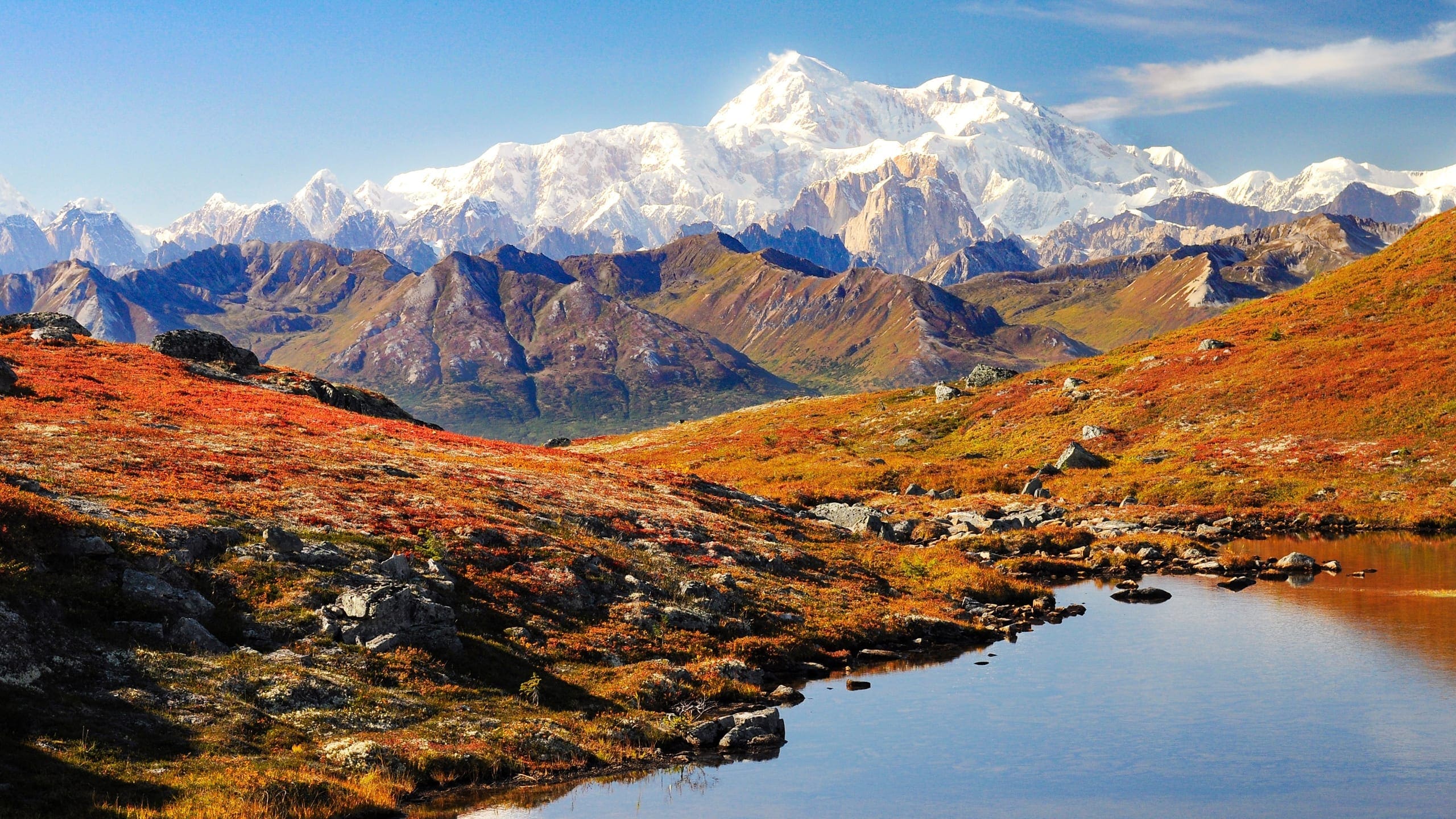About Denali National Park & Preserve
In many ways, Denali is simpler than most national parks. If you plan to understand the park, or plan a visit, it helps to know some basic details:
-
Denali has only one road, and only one road entrance.
Called the Denali Park Road (or simply “the park road”), it is 92 miles long and runs from east to west. It is a scenic road made mostly of dirt and gravel. It starts in a low, forested area, but rises and falls through mountain passes (and along some precipitous mountain sides!) on its journey west.
The park entrance, where the Denali Park Road meets Alaska Highway 3, is at the eastern end of the park. Like many rural roads and landmarks in Alaska, the Denali entrance is referred to by its mile along the highway. In this case, the park entrance is at Mile 237 on Highway 3 (Mile 0 is in Anchorage, where Highway 3 originates).
-
Summer travel in Denali
In the summer (May 20—the middle of September), privately-owned vehicles may drive the first 15 miles of the park road, to a place called Savage River. Travel beyond Savage River is mainly limited to a variety of narrated and non-narrated buses, and passengers must board their bus near the park entrance (or in some cases, at their hotel outside of the park). Bus trips are a great way to see the landscape and wildlife of the park.
-
Denali is home to wild lands and many wild animals
Congress created this park in 1917; at the time, the purpose was to protect Dall sheep from over-hunting. The park’s size and purpose grew over time. The park is now around 6 million acres, and much of the park must remain devoid of human development. This means that the only trails in the park are near the park road, and mainly near the park entrance. However, Denali offers visitors a rare opportunity to hike off trail in a wild landscape.
-
The National Park Service does not run a lodge or hotel
There are six campgrounds in Denali, but no NPS-run lodging. Learn more about lodging in the area.
Home to North America’s tallest peak, Denali has been a mecca for mountaineering and adventuring for more than a century. Today, the park continues to enchant climbers, pack-rafters, skiers, dog mushers and athletes seeking to test themselves against the raw, unchecked power of a truly wild landscape.
Origin of Denali National Park and Preserve
More than a century ago, two remarkable men spent the winter in a cabin not far from the Toklat River. Their experience and interaction with the wild landscape changed them. In turn, they came to have a profound influence on preserving the landscape for generations to come.
Charles Sheldon, an early conservationist and gentleman hunter from Vermont, along with Harry Karstens, a legendary outdoorsman and dog musher, struck upon an idea over the long winter to make of the place the world’s first national park established to conserve wildlife. By 1917, after almost a decade of hard work, Sheldon and others persuaded Congress to create Mount McKinley National Park. Four years later, in 1921, Karstens was hired on as its first superintendent.
Source: Overview of Denali National Park
Fast Facts:
| Date the Park was Established: | February 26, 1917 |
| Park Area (as of 2019): | 4,740,911.16 acres (19,185.8 km2) |
| Recreational Visitors (2018 Total): | 594660 visitors |


